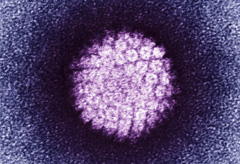Casual sex fuels rise in cervical cancer
Cervical cancer rates in women have soared in the past two decades due to an increase in unprotected sex and promiscuity

Cervical cancer rates in women have soared in the past two decades due to an increase in unprotected sex and promiscuity
Cervical cancer in young women has almost doubled between 1992 and 2006, despite the disease dropping in all other age groups.
The figures from Manchester University show a 43 per cent increase in cases of cervical cancer in women in their 20s, rising from a rate of 5.5 to 7.9 per 100,000 women.
'Although numbers getting cervical cancer are dropping in the immediate years after cervical cancer screening began, the number of women in their 20s now developing the disease has been rising since the early 90s,' says study author Robert Alston.
Cervical cancer is caused by strains of the human papilloma virus, which is transmitted during sex but only turns cells cancerous under certain conditions.
As well as an increase in sexual partners and unprotected sex, the rise in the disease has also been attributed to smoking as cigarette smoke can damage calls in the cervix, making them less able to fight infection.
Women in England are offered a smear test once they turn 25 under the NHS Cervical Cancer Screening Programme. Since 2008, all 12-13 year olds have been offered a vaccine to protect against the disease.
Marie Claire Newsletter
Celebrity news, beauty, fashion advice, and fascinating features, delivered straight to your inbox!
Hazel Nunn from Cancer Research UK, which funded the study, says: 'Whatever your age, if you have any bleeding between periods, during sex or after menopause, you should go to your GP.'
'It is essential we make every effort to find targeted ways to educate and persuade younger women to attend screening when invited, and remind them that quite simply it could save their life,' says Robert Music, director of Jo's Cervical Cancer Trust.
-
 The 10 best dresses celebrities from Tiffany & Co.'s Blue Book 2025 Gala
The 10 best dresses celebrities from Tiffany & Co.'s Blue Book 2025 GalaCelebrating the brand's marine-inspired collection
By Sofia Piza
-
 These are the 11 cult designer buys of spring 2025—and they're already selling out
These are the 11 cult designer buys of spring 2025—and they're already selling outFrom Miu Miu's must-have cowboy hat to Loewe's latest bag
By Clementina Jackson
-
 Prince William and Princess Kate have announced their 14th wedding anniversary plans
Prince William and Princess Kate have announced their 14th wedding anniversary plansBy Jenny Proudfoot